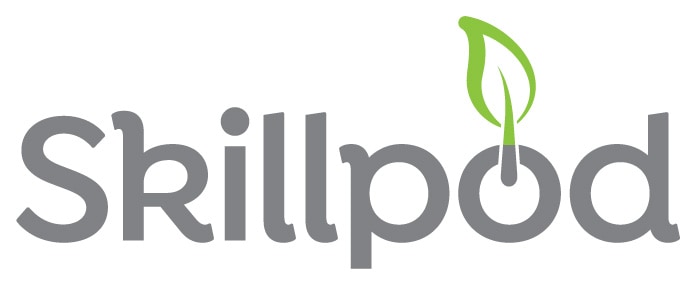It seems that many businesses understand the massive benefits of employee engagement – including better performance and lower turnover – but struggle to make it happen. It’s easy to see why. People are inherently complicated, fickle and are motivated by different things. It takes a business with a growth mindset, in addition to people leaders with insight, to create an environment where engagement levels are consistently high.
What do people want from their work?
Much of this insight comes from a basic understanding of what people want to get from work. Putting aside the necessary considerations of pay (more to come on that later on), people mostly want to feel a sense of engagement. This in turn comes from doing work that has some sense of personal purpose and meaning.
It’s important to keep in mind that purpose and value here correlates to internal, personal considerations and motivations, rather than external rewards such as pay.
Is there a difference between engagement and motivation? Does it matter?
Not really. The two terms are interrelated and are often used interchangeably. Employee engagement is the level of emotional commitment that an employee has to their job and the business in general. Employee motivation is the level of energy, commitment, and creativity that an employee brings to their job. It’s worth noting the difference between intrinsic and extrinsic motivation, however. An extrinsically motivated employee will be spurred to act by rewards such as time off, money or avoiding unpleasant circumstances such as being fired. Intrinsic motivation on the other hand, arises from the inherent feelings you have about your job and the personal sense of value you get from it. An employee who is intrinsically motivated will also likely be more engaged.
The six key building blocks for employee engagement
Learning what motivates and engages your staff will make a big difference to overall performance, retention rates and business profitability. Putting aside individual differences for a moment, there are certain factors which come up time and again in creating and maintaining a culture of engagement at work.
The following is our take on what the six key building blocks for employee engagement are.
1. Clarity & direction
 Employees typically like to have clarity when it comes to their work.This includes getting clear information about what they are working towards and what they need to do. Leadership and wider organisational culture play a big role here. Clear goals and direction that are communicated well will make a big difference to how effectively people can focus and get on with their job.
Employees typically like to have clarity when it comes to their work.This includes getting clear information about what they are working towards and what they need to do. Leadership and wider organisational culture play a big role here. Clear goals and direction that are communicated well will make a big difference to how effectively people can focus and get on with their job.
A work environment that nurtures clarity, and accountability will build a sense of common purpose and make it easier for everyone to work together and achieve their goals. On the flip side, there are environments where people have little clarity and direction regarding goals and expectations. In these cases engagement will diminish over time – regardless of how interesting the work may be.
2. Feedback
 This is a big one, so we’ll look at it in two parts.
This is a big one, so we’ll look at it in two parts.
Part A: Getting feedback
People want to know how they are performing. They want to know if they are hitting the mark and where they can improve.
It’s important to get both formal and informal feedback for this to happen.
Formal feedback (also known as a performance review) is planned and follows a clear process. It’s an important HR process and gives structure to the evaluation of performance. Performance reviews should be collaborative, honest and when done well, are an empowering experience for the employee and manager rather than an empty box-ticking exercise. When done well, formal feedback gives people clarity and something to aim for, which can be highly motivating.
Sitting alongside the formal feedback process, informal feedback or mentoring is a rich source of employee engagement. Regular feedback given in an informal and supportive context can really encourage growth and development. Open communication and regular informal catch-ups builds organisational capability around feedback which means that formal performance discussions, when they actually happen, are a much easier lift.
Getting quality feedback says ‘you have been noticed’. This spurs engagement – regardless of whether the actual feedback is good or bad. Conversely, the absence of quality feedback can leave people feeling lost, neglected and ultimately disengaged from their work.
Feedback should always be constructive, and delivered through open, transparent communication. It takes a high level of skill to be able to do this well. High trust between the people involved helps considerably.
Part B: Giving feedback
Feedback also needs to flow both ways.
Having a voice and being heard is crucial for employee engagement, but companies often fail to engage their staff effectively in this way. Staff engagement surveys warrant a mention here. These surveys can be useful (when designed well) but a better way to gauge engagement levels is to informally engage with the staff on a regular basis.
Leaders and managers should be available, visible and approachable. They should ask good questions and listen carefully to what is being said. Nothing lifts the engagement of an employee like knowing their voice is valued.
3. Opportunity
 People spend a lot of their life at work and typically want to feel like they are developing in some way. Learning new skills is an important part of employee motivation so providing regular training and professional development opportunities is a cornerstone of employee engagement. This is especially true for millennials.
People spend a lot of their life at work and typically want to feel like they are developing in some way. Learning new skills is an important part of employee motivation so providing regular training and professional development opportunities is a cornerstone of employee engagement. This is especially true for millennials.
It’s important to note that training opportunities provided need to be relevant to what employees actually need and want to learn rather than a generic box-ticking exercise. The more specific and targeted the training opportunities, the better the payoff for engagement . Getting employees’ opinions on what would be useful and interesting and how they would like to access the training can go a long way towards improving buy-in and engagement.
Variety is also important in maintaining engagement levels. Variety can be built into work by giving people the opportunity to try a different role or be involved in a different project. Providing variety builds organisational capability and enhances creativity, flexibility and connection between teams. All of this is great for engagement levels. Offering people opportunities to change up their role in a way which aligns with their personal strengths and references is another way to signal to employees that they matter and that someone is thinking about their personal and professional development.
4. Balance
 Balance in the workplace typically refers to concepts of workload and burnout. Developments in workplace communication tools in addition to the changing way we work are clearly having an impact, with the line between work and home life becoming increasingly blurred. The concept of balance is very important to people and features heavily in employee satisfaction levels. If your workload is consistently encroaching on your personal life, your job will start to take a personal toll and your sense of satisfaction will ultimately erode – regardless of how interesting your job is. As usual, flexibility is key and providing employees with options seems to be the answer.
Balance in the workplace typically refers to concepts of workload and burnout. Developments in workplace communication tools in addition to the changing way we work are clearly having an impact, with the line between work and home life becoming increasingly blurred. The concept of balance is very important to people and features heavily in employee satisfaction levels. If your workload is consistently encroaching on your personal life, your job will start to take a personal toll and your sense of satisfaction will ultimately erode – regardless of how interesting your job is. As usual, flexibility is key and providing employees with options seems to be the answer.
Balance at work however includes more than workload. It can also mean a good distribution between direction and autonomy or a good mix of individual and team work. Personal preferences are a major factor here, but employees typically like to mix things up and have a healthy balance.
Autonomy at work is great but without a wider structure and good direction for this autonomy to thrive under things can fall apart quickly. Similarly people may prefer to work alone but without regular interaction with colleagues, motivation and purpose may be lost and with it, engagement.
5. Creativity
 Creativity at work refers to the opportunities people are given to challenge themselves and think outside the box. Humans are creative by nature and most people have a real and pressing need to flex these muscles whenever possible. Creativity is innate, and despite protestations of “but I am not creative” this capacity for growth should be nurtured by companies who care about employee engagement.
Creativity at work refers to the opportunities people are given to challenge themselves and think outside the box. Humans are creative by nature and most people have a real and pressing need to flex these muscles whenever possible. Creativity is innate, and despite protestations of “but I am not creative” this capacity for growth should be nurtured by companies who care about employee engagement.
The capacity for creativity exists across all jobs – it certainly is not the exclusive preserve of creative industries. Creativity can be realised in any number of ways. It can include any form of problem solving, from figuring out a more efficient work process, to changing the order of something, to building a new part.
It essentially means challenging the way things are done and trying something new. Giving people the opportunity to be innovative and creative in their daily tasks can transform the work experience and lead to much higher levels of engagement. Astute leadership will recognise this need and encourage it whenever possible.
6. Belonging & recognition
![]()
 Employee engagement is also feeling that you are a part of something bigger than yourself. This need to belong, exists in both our personal and professional lives. It’s difficult to overestimate the importance of good colleagues, and the capacity for work relationships to build a sense of belonging and wellbeing is well known. There is nothing like working with someone who brings out the best in you and whose company you enjoy.
Employee engagement is also feeling that you are a part of something bigger than yourself. This need to belong, exists in both our personal and professional lives. It’s difficult to overestimate the importance of good colleagues, and the capacity for work relationships to build a sense of belonging and wellbeing is well known. There is nothing like working with someone who brings out the best in you and whose company you enjoy.
We’ve already talked about the importance of being noticed at work. Recognition also involves being thanked for good work, time and effort. Remuneration clearly plays an important role here and people want to be paid their worth. If an employee is consistently overworked and underpaid, all good feelings will disappear no matter how engaged they are to begin with.
Recognition however, as a factor of employee engagement extends well beyond money. Research shows that small, personal gestures can often have a bigger impact than annual pay reviews. A thank you card, a voucher, a mention at the team meeting can really make people feel valued and increase their levels of performance and their commitment to the business.
Tying it all together
The above points won’t make a blind bit of difference if the decision makers do not embrace a growth mindset. Businesses often carry out engagement surveys that tick the box of employee engagement. On their own, these are not enough.
If a business really wants engaged staff, employee engagement needs to be a deep business strategy that is built in at all levels. This doesn’t just happen. It takes real effort and considerable leadership skill and insight to understand what factors (and what combination of factors) will likely yield the best results .
Getting to know your people and what makes them tick is central to enhancing employee engagement.
The following leadership actions will also help:
- Be available and accessible to your employees
- Ask them for their opinions & listen to what they say
- Set clear goals and expectations
- Provide regular feedback and encourage this from everyone
- Provide regular training opportunities
- Move people around (if they want to) and change things up if possible
- Recognise effort and achievement
- Manage workloads well
- Give people freedom to experiment and work things out for themselves but be around if they need you
- Celebrate success together
Do you need to build capability in staff engagement? At Skillpod we specialise in online training for New Zealand workplaces. Short, targeted and engaging e-learning that fits around your schedule.

